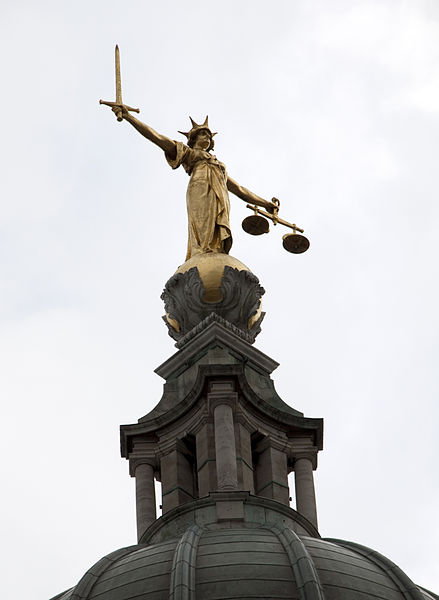Protecting your deposit – a guide for tenants
Most landlords would prefer to give you your deposit back – it just doesn’t feel like that for tenants.
If you want to get your deposit back in full, there are some things you need to do before, during and after a tenancy.

Before your new tenancy
Ensure your landlord is using a government-backed tenancy deposit scheme. Not only does this give you more protection, but they have to to comply with the law. If your landlord is not aware of this requirement, or tells you it’s not needed for your deposit you should be very reluctant to give them anything, and may want to reconsider taking the property.
Check the contract carefully – many will have some specific terms regarding reasons for withholding the deposit. This includes charging you for cleaning, disposing of rubbish or anything left in the property at the end and more.
Finally, check the property as you move in, preferably with the landlord or their agent. Look for existing damage to the property (especially floor coverings, paintwork and fittings) and to any of the furniture or items listed on the inventory and check it is recorded with a copy for both of you. Finally, check that everything on the inventory is present. It’s a good idea to take some photos or video of everything as well, so at the end or your tenancy you can compare it easily.
During your tenancy
For most tenants it’s the landlords responsibility to look after larger repairs (see Top 10 tenants maintenance responsibilities), but this does not mean that a tenant does not have to do anything. So that you don’t get charged at the end, make sure you pay attention to harder to clean item like carpets, keep drains clear and clear up spills and splashes before they leave permanent stains.
Ensure you notify you landlord of potential issues promptly. A small problem can rapidly become a big one:
- A pipe joint that is ‘weeping’ may be approaching failure
- Leaking guttering, downpipes or even a toilet overflow running can both mark and damage exterior walls
- Any cracks appearing in interior or exterior walls could be an early sign of structural problems
By notifying the landlord you will ensure you have done your best to resolve any issues and avoid being blamed for making a small problem much worse.
One major item is for some flats and houses in damp problems. This will be noticeable and discoloured patches on exterior walls, leading to unsightly mould growth. Make sure you have adequate ventilation in all rooms – trickle vents, a slightly open window or an extractor fan – and use heating in winter to keep the temperature above 19°C.
At the end of your tenancy
It’s at the end of a tenancy that most arguments about deposits arise. It’s often only at this point the landlord or their agent can properly inspect the property.
Most private contracts exclude charges for ‘fair wear and tear‘, and this is usually one of the most difficult of conflicts to resolve. What is fair wear and tear is going to be based on:
- The length of the tenancy – you expect more wear over time
- The number of occupants (one of the reasons you should check with the landlord before allowing additional to live there)
- The relative condition of the property at the start
To give you an idea of how I would calculate if something is ‘fair wear and tear’, I base it on how often I would expect to replace an item, and if the wear is proportional to the length of your tenancy:
- Paint – 2-3 years
- Carpets, Curtains, kitchen appliances – 5-7 years
- Furniture – 10-12 years
- Building fabric, doors and fittings – 15+ years
For a short tenancy of 6 months, I would expect minimal additional wear, while for a 5 year tenancy I would start looking at replacing some items based on age. When the landlord has to replace something early to bring it back to the condition where they can rent it out again, they may start looking at charging at least part of the cost against your deposit.
Clearance and cleaning
 One big cause of keeping deposits is additional cleaning required. Unless it’s in the contract, you should be returning the property as clean as possible. This includes dealing with items like stained carpets, curtains or upholstery, clearing limescale from taps, sinks and toilets and thoroughly cleaning kitchens and bathrooms.
One big cause of keeping deposits is additional cleaning required. Unless it’s in the contract, you should be returning the property as clean as possible. This includes dealing with items like stained carpets, curtains or upholstery, clearing limescale from taps, sinks and toilets and thoroughly cleaning kitchens and bathrooms.
Unless agreed with the landlord, make sure you don’t leave any of your stuff. They don’t want your old clothes or broken TV and it will cost them time (and possibly money) to remove it. Unless you want charged for this, make sure there is nothing left that’s not on the inventory.
Minor fixes
Make sure all the minor items that are your responsibility are done. Replaced broken bulbs, dead smoke alarm batteries and clear blocked sinks. While a bulb may only cost small amount, if your landlord has to pay someone to come in and replace it, it’s going to cost in the tens if pounds.
If you’ve caused other damage, such as by hanging pictures, you probably need to repair this. Unless you are totally confident that you can do this neatly, discuss it with the landlord or agent first – if it’s just some picture hooks they may prefer to leave them, or they may not be confident of your skills!
For larger repairs, consider arranging for this to be fixed professionally. You may find you can get it done more cheaply than the landlord, but again you will probably need to get permission first.
Move on schedule
If you are late moving out, even by a day or two, landlords are entitled to charge you for the extra time. If you do have a significant problem leading up to your move, keep the landlord or agent informed so they can minimise the knock-on effects. You may prefer to pay rent for an extra few days rather than it being taken from your deposit.
What if my landlord keeps all or some deposit unfairly?
Most landlords don’t really want to do this – with the new deposit protection rules it’s a hassle most don’t want. However, if you feel they have retained the deposit unfairly you can:
Discuss it with the landlord or agent. Request a breakdown of how much deposit has been retained for what element – cleaning, repairs – so you can dispute individual parts. Keep calm and try to avoid being confrontational, but do try to negotiate on individual items. This is best done in writing as you will have a better record of what has been agreed, and you have more time to consider your arguments. Unfortunately by this stage it may be too late to resolve any of the issues yourself, as you probably don’t have access to the property.
If your deposit is being taken for a larger repair, check the costs are reasonable. You may want to consider getting a quote from an alternative supplier – although if you have not had to do property repairs before you will be surprised how expensive seemingly minor items, like repairing one damaged radiator can be.
If you still cannot come to an agreement, the deposit schemes have dispute resolution services. If you both agree to use them this can be a great way of getting an independent decision on what is fair. The exact process depends on the deposit protection scheme used, so check their documentation or website for details.
My landlord is requesting even more than the deposit for repairs! Is this legal?
If you have caused substantial damage you may find yourself being chased for more than the deposit value. Generally you will be issued with an invoice, and you can either choose to pay or dispute it.
If you dispute it you will not be able to use the deposit protection arbitration, as this is not your deposit. If your landlord or agent declines to negotiate, you may well find yourself in court. In this case it will be up to the judge to decide if the claim is justified, and set a repayment schedule.
The process is too complex for this blog post, but generally it will be heard in front of a judge only, and if it is small claims court you represent yourself without engaging a solicitor, although you can do so if you want to.


0 Comments on “Protecting your deposit – a guide for tenants”